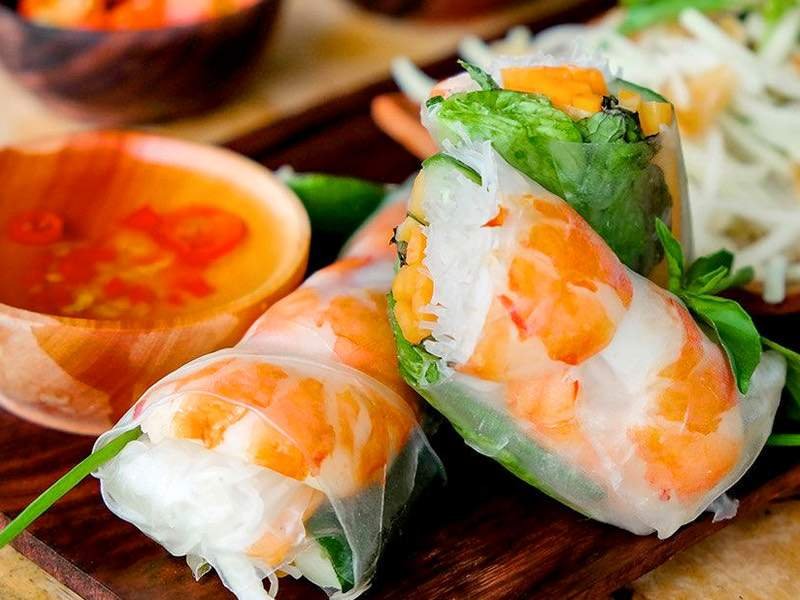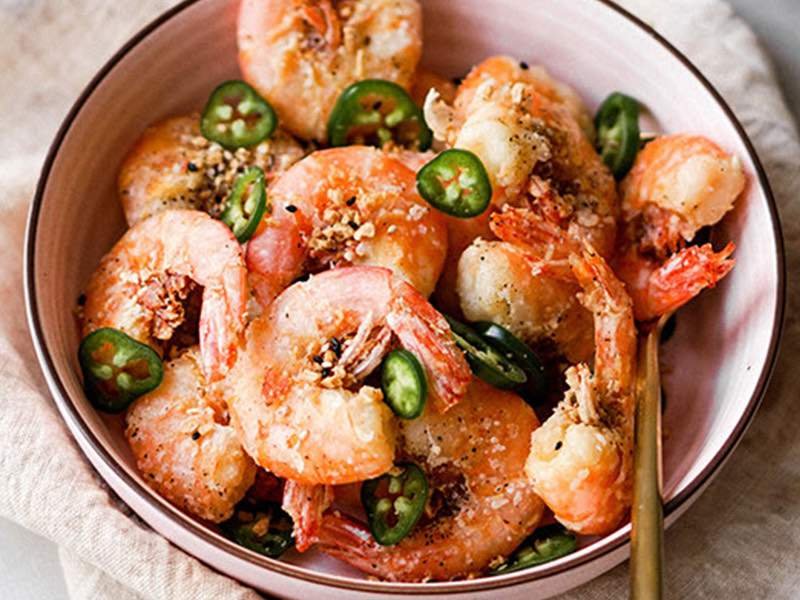Your Essential Guide to Shrimp

Shrimp is one of America’s favorite seafoods, beloved year-round from summer grilling to classic recipes like shrimp scampi, shrimp cocktails, shrimp and grits and shrimp boils.
Fishermen from over 100 different countries offer more than 340 species of shrimp. With so much variety, how do you know which shrimp to choose? The shrimp our experts have chosen at FultonFishMarket.com are what we consider to be the best shrimp in the world based on taste, appearance and sustainability.
Let’s go through the differences in shrimp varieties with our Head of Quality Control, Robert DiGregorio.
What is the Difference Between Shrimp and Prawns?
First thing’s first - is it shrimp? Is it prawns? Even though the terms “shrimp” and “prawns” are used interchangeably, there are some technical differences that marine biologists use to differentiate between the two. They are both suborders of decapod crustaceans, meaning they have 10 legs and an exoskeleton. Shrimp belong to the suborder Pleocyemata and prawns belong to the suborder Dendrobranchiata. Shrimp are marine animals and prawns are more brackish and freshwater. There are some hard to notice differences too. Their gills are arranged differently, the number of legs with claws is different (shrimp have two pairs with claws and prawns have three), and the segments on their bodies overlap in different ways.
Technical differences aside, even people in the seafood business will use the terms shrimp and prawns while talking about the same product. Anyone involved in the international shrimp trade using English is simply better off just using shrimp, as the word prawn is used inconsistently to describe different things. For instance, prawn in some places may be used to describe very large shrimp, and Dublin Bay prawns are not prawns or even shrimp at all but langoustines, which are more lobster-like.
So, it’s confusing, and in common vernacular one very often hears both terms used to describe the same thing, even if it may not be scientifically correct to do so.
What are the Differences in Shrimp?
Shrimp are sold by size indicated by numbers such as U-10 or 26/30. The “U” means “under,” so in the example U-10 it would mean under 10 shrimp to a pound. 26/30 means 26 to 30 shrimp to a pound, and so on. To learn more about the different shrimp sizes, check out our Shrimp Size Chart. Shrimp are also sold by color, mainly white, brown, pink, red and tigers thanks to the stripes.
Shrimp aquaculture began slowly in the 1970s, but by 2007 had exceeded wild. These days, 75% of farmed shrimp comes from Asia, notably China, Thailand, Indonesia, India and Vietnam. The other 25% come from Latin America, where Ecuador and Mexico are the largest producers.
Gulf White, also known as Northern White, are found along the Atlantic Coast of the USA from New Jersey to Florida and all along the Gulf of Mexico. The Gulf White is the market standard in the United States and all other species, domestic and imported, are measured against it. The meat is firm, sweet and mild flavored, with a pleasing pink color when cooked.
Another white shrimp we offer is from the Pacific Ocean side of South America. Western White shrimp is a slightly grayish shrimp with good flavor and texture and is highly regarded in the United States.
Our Mexican Whites, also called Blue Shrimp because of their greenish-bluish tint, is found from the Baja to Peru, and is a major species on the Pacific Coast of Mexico. It is of excellent quality with firm meat and a slight salty-sweet flavor.
Our White shrimp, sometimes called White Leg shrimp, is from Vietnam, far from its original habitat of southern Mexico, Guatemala and El Salvador. It has a creamy white color that turns pink when cooked, with a firm texture and a sweet mild flavor. This species has become extremely important in shrimp aquaculture and farmed production has enormously expanded in Vietnam, Ecuador and other countries including the United States. In fact, Pacific White shrimp was the most cultivated seafood species in the world as of 2017 (when the latest statistics were available), even ahead of salmon.
For something a little different try our head-on red shrimp from Argentina. Found mainly off the coast of southern Argentina, it is most often caught between September and March. Their heads, bright red color and large size make them something special on the plate. While they require light and gentle cooking because of their somewhat delicate texture, they are particularly well-flavored, and are highly regarded for their very sweet taste.
Can you Eat Shrimp Heads?
Yes, you can eat shrimp heads!
There are many ways to enjoy shrimp heads. You can fry them for a crunchy snack and eat them whole - simply heat some vegetable oil in a shallow pan and dredge the heads in cornstarch, salt and pepper, then fry for 2 minutes until lightly golden. You can also reserve the heads and sauté with shallots and garlic, add water and simmer to make a tasty shrimp broth. Strain and use in any fish stew or chowder.
Is the Vein in Shrimp Poop?
We’ve all wondered exactly what that dark line sometimes found along the back of shrimp are. It is the shrimp’s intestinal tract, and while it is safe to eat, it has an unpleasant, gritty texture and is easily removed.
Simply peel it away from the shrimp or pry it off the shrimp with the tip of a knife.
Is it Healthy to Eat Shrimp?
Aside from their plump, succulent texture and sweet, delectable flavor, shrimp have many health benefits as well. Shrimp are low in carbs, calories and fat. They are high in phosphorus, iodine, B-12, and contain antioxidants.
Our Favorite Shrimp Recipes
Fresh summer rolls are a favorite enjoyed at Vietnamese restaurants, but they're so easy to recreate at home. We love them with shrimp but you can also make them with fresh lump crabmeat, seared scallops and cooked fish. Get the kids involved in wrapping and rolling - just treat the rolls like small burritos!
Sweet, plump shrimp seasoned with Cajun spices simmered with smoked sausage, corn, potatoes and garlic is the best way to celebrate Fat Tuesday or any day. Gather a group of friends around a long table, dump the whole delicious boil over sheets of newspaper, roll up your sleeves and tuck in!
Easy Salt and Pepper Shrimp Recipe
This easy salt and pepper shrimp recipe from Fulton friend Eat Cho Food is shrimply the best! Stay in and make this 5-ingredient, ready in 10 takeout classic.



